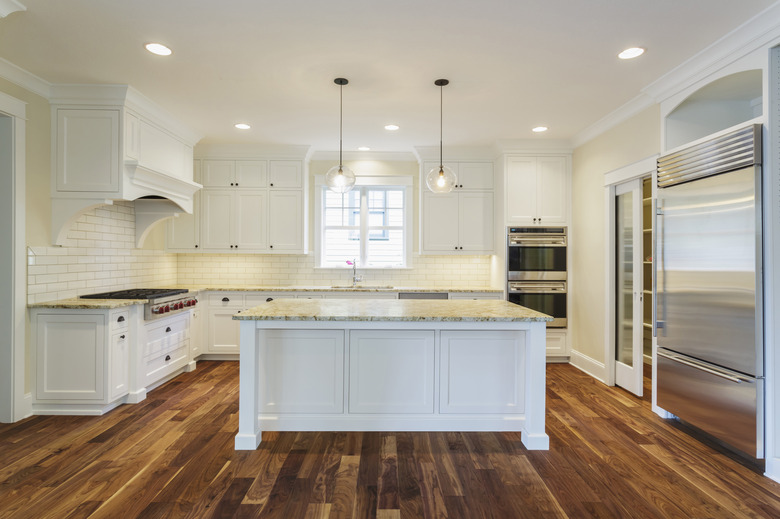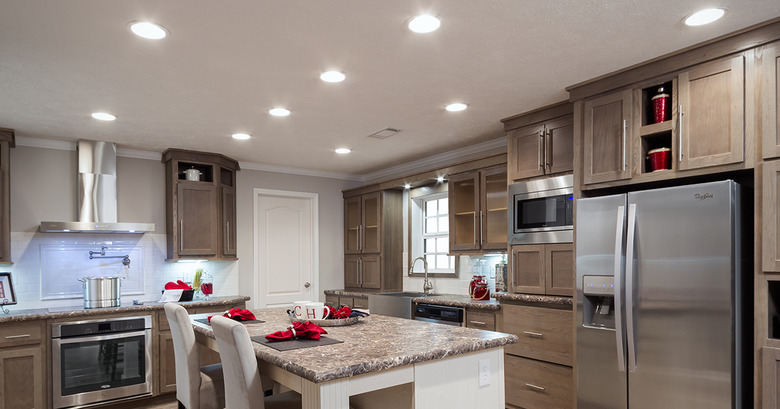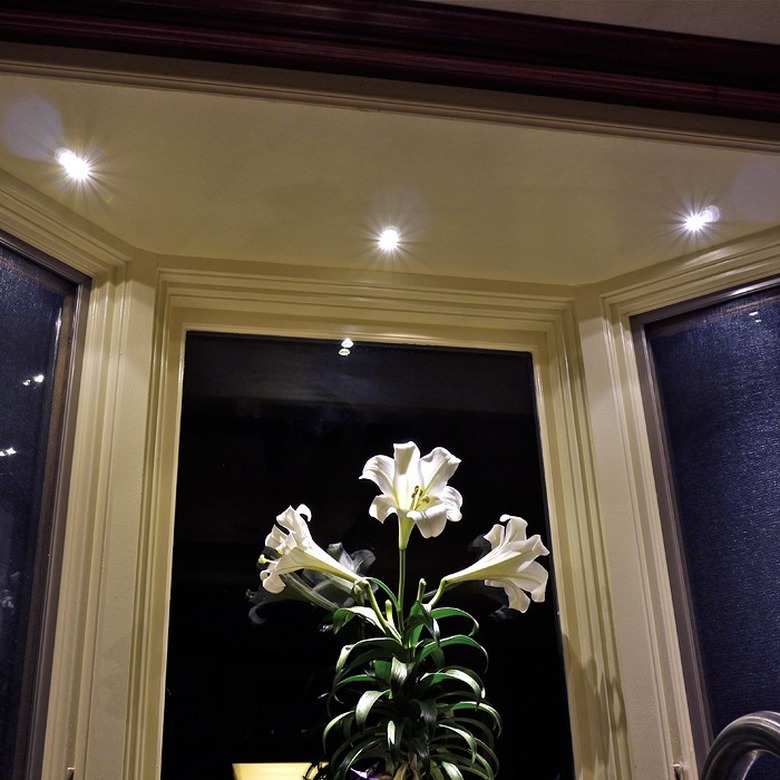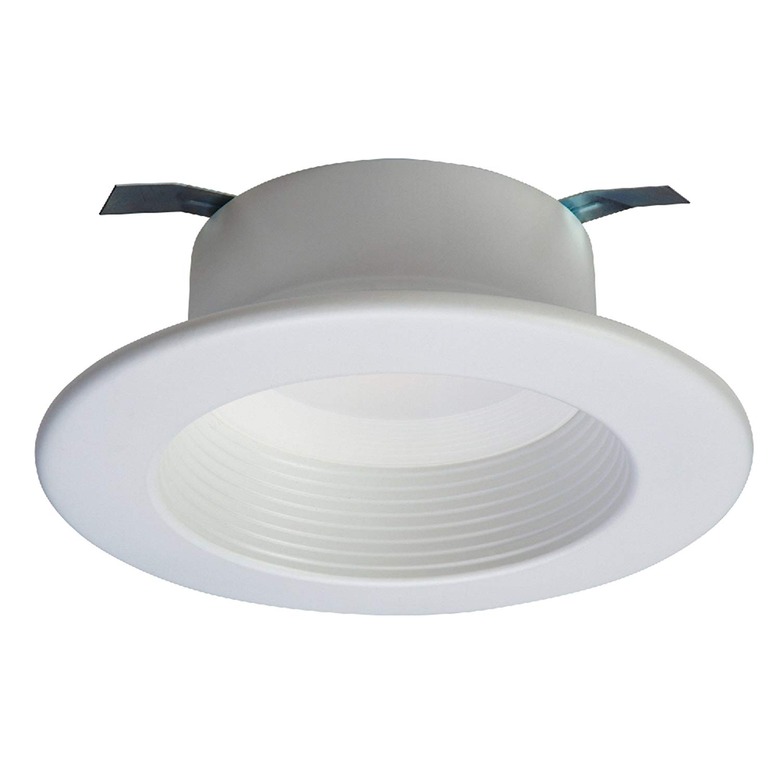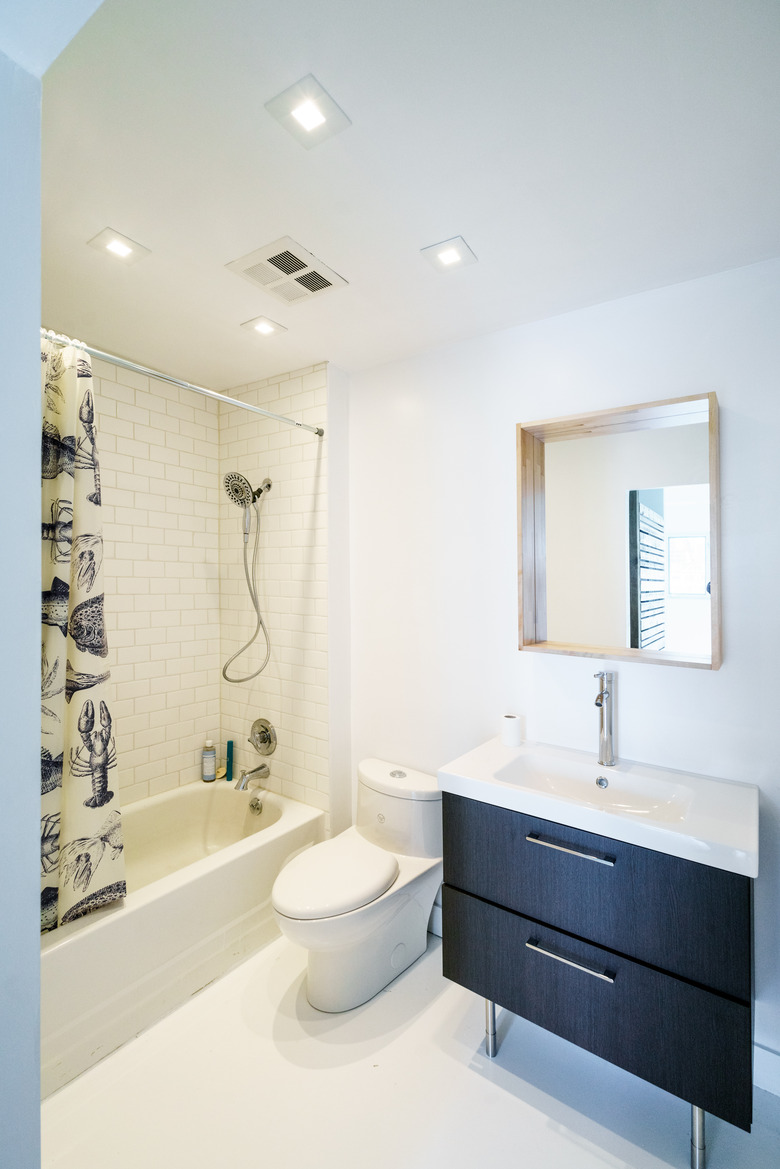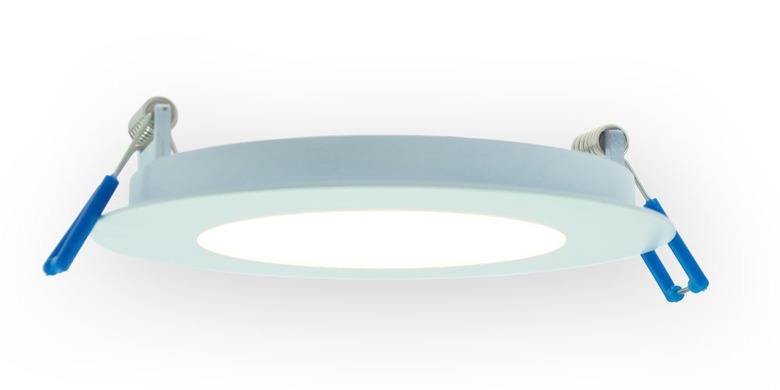Recessed Lighting Fixtures: Pros & Cons
The advantages and disadvantages of recessed lights is a perennially hot topic because recessed lights, like most other types of light fixtures, are good in some places and bad in others. Likewise, there are smart and not-so-smart ways to design with recessed lights, and there right and wrong ways to install them. Used properly, recessed lights are sleek, unobtrusive fixtures that can be good problem-solvers. Used improperly, they can waste electricity, provide poor lighting and cause your heating and cooling bills to go up.
Recessed Lighting Pro: You Don’t See Them
Recessed Lighting Pro: You Don't See Them
It's safe to say that the main (if not only) reason to use recessed lights is so you don't have to look at them. In most cases, all you see is a discreet, round trim ring around a hole with light coming out of it. By contrast, all other light fixtures mount to the surface of the ceiling or hang down from it. The sleek aesthetic of recessed lights makes them popular for modern décor and home styles, but they also work well in traditional schemes, if they're used judiciously.
Recessed Lighting Con: You Need a Lot of Them
Recessed Lighting Con: You Need a Lot of Them
Because their light bulbs are contained inside a recessed housing, recessed lights can do nothing but shine downward. (Although some fixtures have bulbs that can be pivoted a bit for angled lighting.) This means that recessed lights are essentially spot lights and can illuminate only a limited area. By contrast, many fixtures that hang down from a ceiling shine light in all directions, as well as up toward the huge reflective surface of the ceiling, providing much more even general illumination than recessed lights. Consequently, recessed lights tend to be used in profusion, especially in large living areas and in kitchens, two places where people want a lot of bright, even light.
Recessed Lighting Pro: They’re Good for Special Cases and Low Ceilings
Recessed Lighting Pro: They're Good for Special Cases and Low
Ceilings
Let's say you have nice window behind your kitchen sink. You want some lighting for the sink area, but you don't want a fixture that hangs down and obscures the window or detracts from the window's impact (even if it doesn't hang down too low). A recessed fixture can solve this problem perfectly. The same solution is useful in many tight places, such as underneath soffits or inside closets—any place where a fixture will just get in the way or can encroach on limited headroom. This makes it easy to see why recessed lights are so popular for remodeled basements.
Recessed Lighting Con: They Lack Charm
Recessed Lighting Con: They Lack Charm
Conventional fixtures with pretty shades or decorative bulbs can provide a pleasing glow and can actually be very nice to look at. Compare that to a recessed light, which can feel like someone is shining a flashlight down onto your head; when you look up, you're blinded by a harsh light directed right into your eyes. Conventional fixtures can be used as major design elements; recessed lights are basically holes of light and nothing else. A decorative trim ring on a recessed fixture is a poor excuse for a design feature. On the other hand, if you want sleek, no-see-um fixtures, this lack of decorative value is not a problem.
Recessed Lighting Pro: They’re Ideal for Wet Areas
Recessed Lighting Pro: They're Ideal for Wet Areas
Recessed lights are the only type of standard household fixtures that can be installed in a shower or directly above a bathtub. Special recessed fixtures rated for "wet areas" have sealed lenses that keep out water vapor and the occasional spritz of droplets during bathing. And, again, thanks to their flush installation, they don't take up precious headroom, and you can't accidentally knock into them while soaping up your underarms.
Recessed Lighting Con: They’re Lousy for Vanities
Recessed Lighting Con: They're Lousy for Vanities
The aforementioned flashlight effect is most pronounced when recessed lighting is used above a bathroom vanity. When you're looking closely into the mirror, the light shines onto the top of your head and leaves your face in shadow. Most of us are interested in seeing our faces, not how thin our hair is getting. Wall-mounted lights at both sides of the vanity mirror are much better than recessed lights above.
Recessed Lighting Pro and Con: They’re Hit-and-Miss for Task Lighting
Recessed Lighting Pro and Con: They're Hit-and-Miss for Task
Lighting
Because they shine bright light downward, recessed lights can be either good or bad for task lighting in a kitchen and elsewhere, depending on the situation. As a general rule, they're good if your work doesn't put you in the light's path between the fixture and the work surface, thus shadowing the area where you need light the most. For example, a few well-placed recessed fixtures can be good for illuminating a breakfast bar (counter area), where people sit at the bar without blocking the light. On the other hand, recessed lights close to wall cabinets will shine mostly on the cabinet doors and create dark shadows on the countertop work areas below (you can fix this with undercabinet lighting).
Choosing the Right Type of Recessed Light Fixture
Choosing the Right Type of Recessed Light Fixture
You've probably heard that recessed lights can be dangerous and energy-wasting because they can't be covered with insulation (without creating a fire risk) and because they leak air into the attic. This is true, but it applies only to standard (usually cheapo) fixtures. If your electrician tries to use these in your insulated ceiling, it's time to find a new electrician.
What you need is an IC- and AT-rated recessed fixture. "IC" means it can be covered with insulation in the attic, to limit heat loss through the conductive materials (mostly thin metal) of the fixture itself. "AT" means the fixture is air-sealed so it doesn't leak heated or cooled air from your living space.
Another consideration is fixture installation. Some recessed fixtures are designed for new construction or major remodeling; these mount to the ceiling framing before the drywall is installed. There are also "remodel" or "retrofit" fixtures that can mount to the drywall itself; you just cut a hole in the drywall, wire the fixture, then insert the fixture into the hole.
